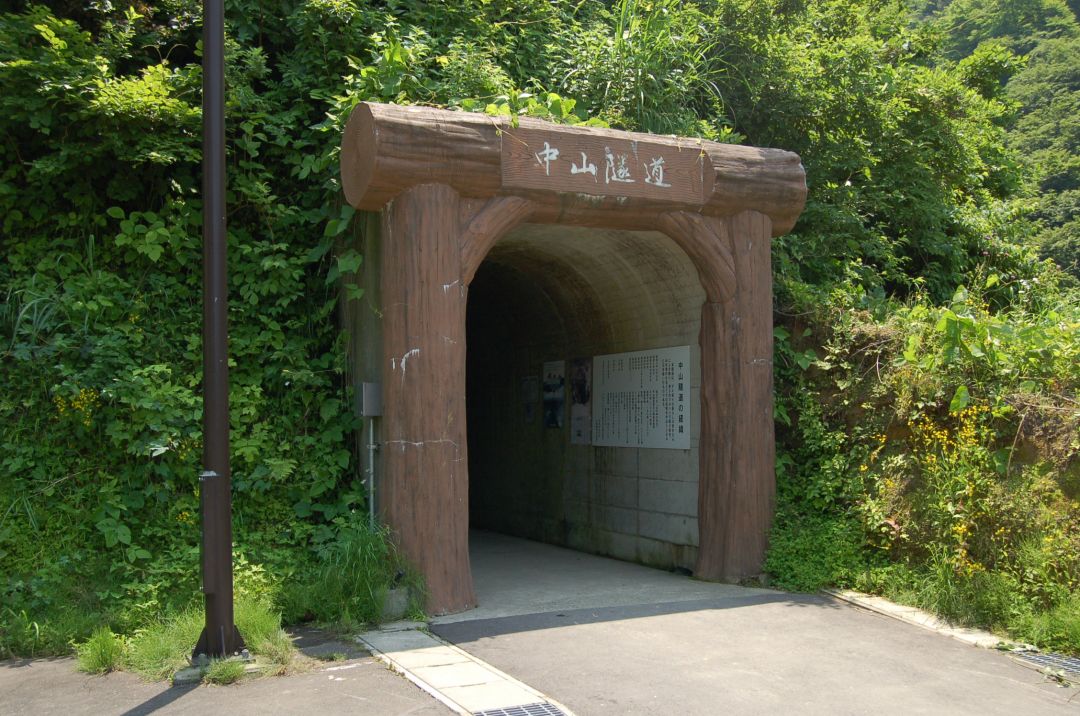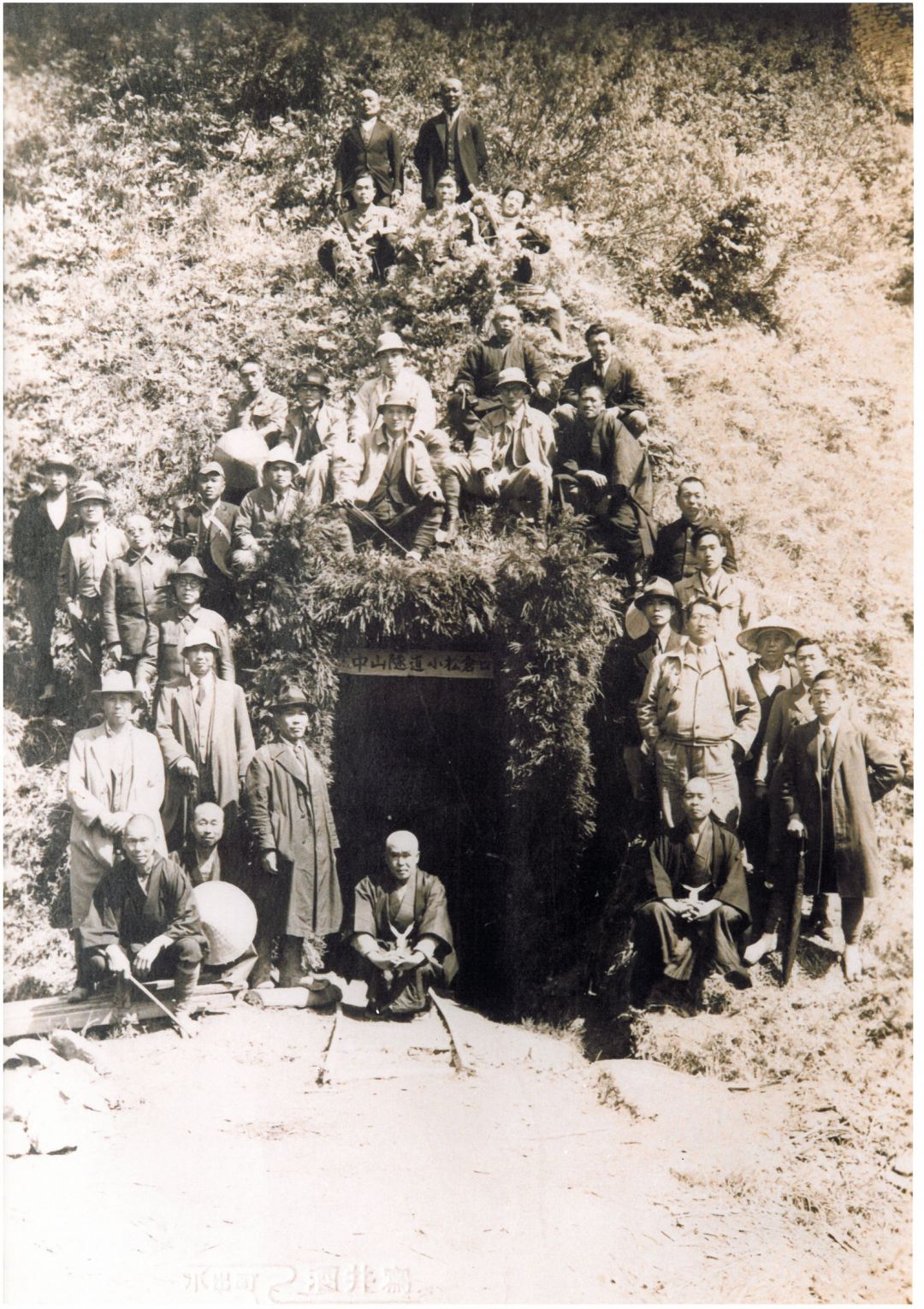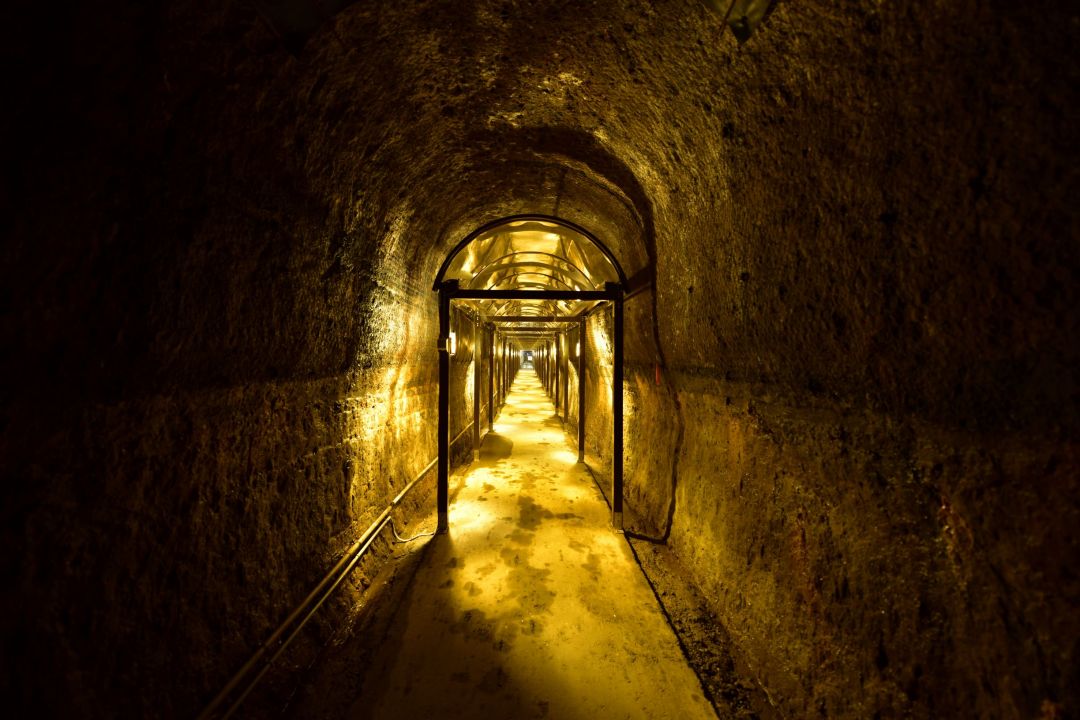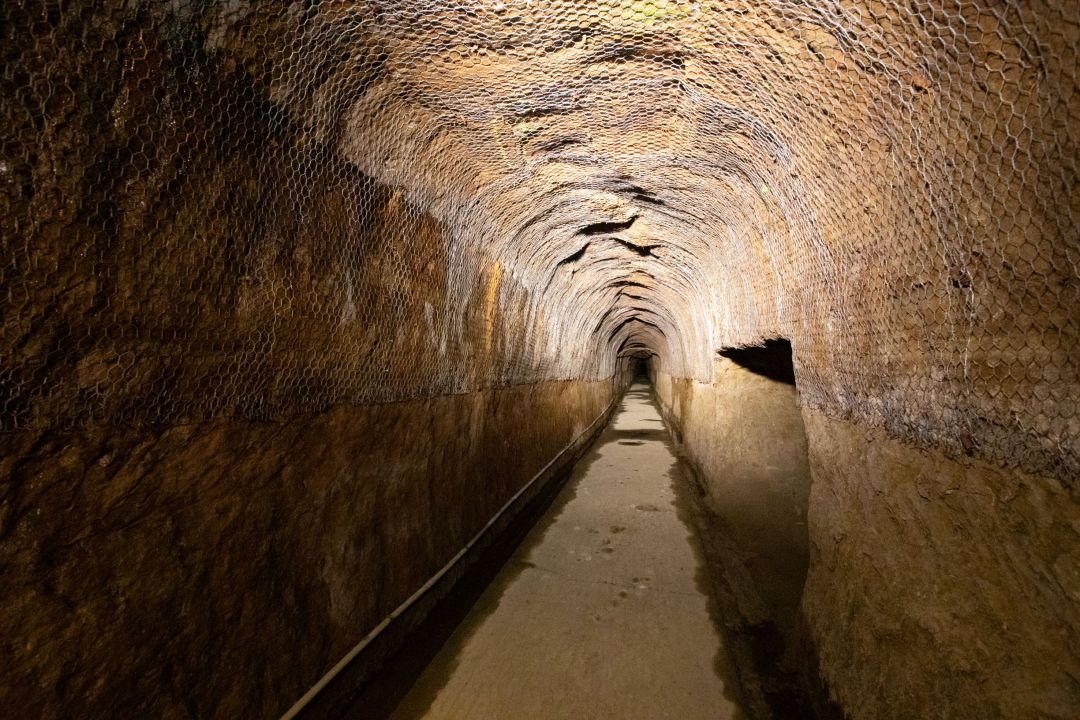22. Nakayama Tunnel

Old Nakayama Tunnel
The old Nakayama Tunnel is the longest hand-dug tunnel in Japan at 877 meters. It was built by the residents of Komatsugura from 1933 to 1949 as an alternative to a dangerous four-kilometer mountain path. Komatsugura did not have a general store or a hospital, so the route was used to reach the neighboring communities of Hirokami and Koide (both in present-day Uonuma). When travel conditions were poor, residents lost access to urgent medical treatment and many daily necessities. Such hardships, along with accidents along the mountain route, eventually spurred the construction of the tunnel. For almost 50 years, it provided a safer route from Komatsugura to the nearby villages. In 1998, a new Nakayama Tunnel was opened to accommodate modern vehicles, and the old tunnel was closed due to multiple cave-ins and rockfalls.
The Tunnel Today
At present, entry to the old Nakayama Tunnel is not permitted beyond the first 70 meters for safety reasons, but the accessible section retains much of the tunnel’s original atmosphere. Recent additions, such as large steel frames, protective metal mesh, and better lighting, have improved safety and visibility. Signboards at the entrance provide information about the tunnel, its timeline, archive photos, as well as data about other hand-dug tunnels in the country. The Japan Society of Civil Engineers lists the old Nakayama Tunnel as a valuable example of the country’s civil engineering heritage.
Filming a Documentary to Preserve the Tunnel
A poster for the documentary Horumaika (Should We Dig?) about the old Nakayama Tunnel, released in 2003, is displayed at the entrance next to an old photograph of the workers who dug the tunnel. Film production began in 1998 and was funded by the residents of Komatsugura to raise awareness of the tunnel’s historical importance and prevent its demolition. To aid the storytelling and the filming process, two short side tunnels were carved in the wall. The nearest one shows how the original tunnel looked before it was expanded to allow for the passage of horse-drawn carts and then automobiles. Inside this space is a replica of one of the wooden minecarts that were used to remove the excavated earth and stone.
Video Walkthrough
Although visitors can only walk through part of the tunnel, the rest can be viewed in a video tour accessible via the QR code on one of the signboards near the entrance. For example, the video shows where short sections of the tunnel were widened so that people traveling on foot could let vehicles pass. There is also footage of numerous marks left by cars that collided with the roughly carved walls in the narrow space.

■ About Nakayama Tunnel
■ To the top page
